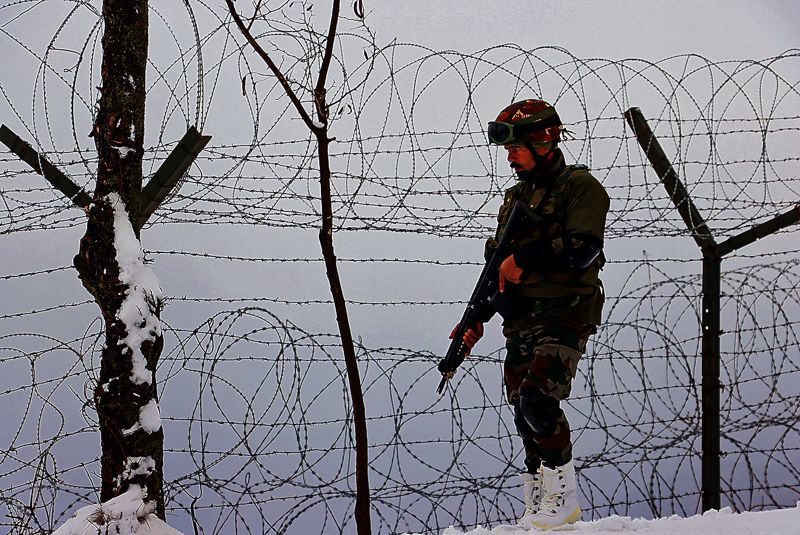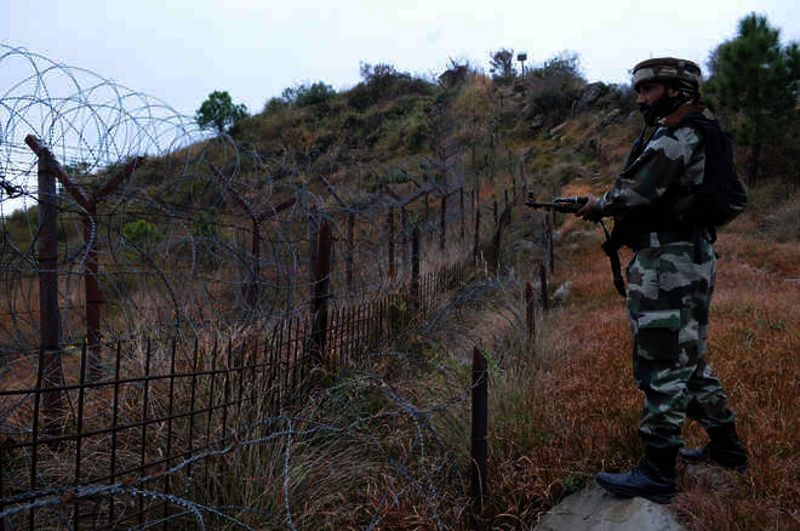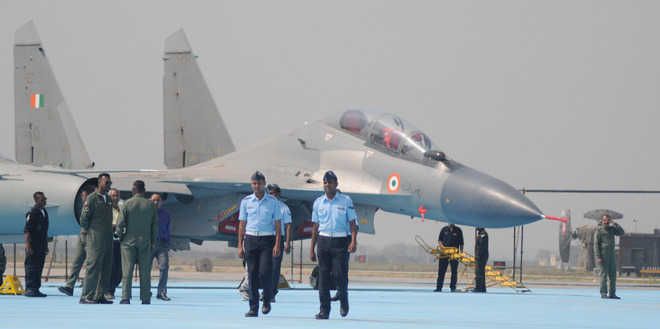Four northeastern states share their borders with Myanmar, and the movement of people has been going on since 1947. The fencing project is being seen by non-Meiteis as a political initiative.


THE TRIBUNE DEBATE BORDER FENCING
ON February 6, Home Minister Amit Shah stated that the Centre was committed to building impenetrable borders. He mentioned that it had been decided to construct a fence along the 1,643-km-long India-Myanmar border. He added that this would facilitate better surveillance, even as a patrol track along the border would be paved.
In the context of national security, the fencing of borders has often caught the fancy of the political leadership worldwide. It is often seen as a solution to the multiple threats emanating from across the border. Governments are quick to undertake fencing to assuage the anxieties of citizens. One needs to examine the efficacy of fencing on the basis of evidence from various parts of the world.
The Berlin Wall acted as a fence between the two ideological and geographical poles of the Cold War — West and East Germany. Reportedly, an estimated 100,000 people tried to escape, and some 5,000 made it. Around 700 miles of the 1,933-mile-long US-Mexico border, stretching from the Pacific Ocean to the tip of South Texas, is fenced. The fence reportedly has landing mats and corrugated metal of surplus material from the Vietnam War. There is also a ‘floating fence’ that sits atop the dunes. For more than a decade, the fence has pitted Democrats and Republicans, who argue that current US asylum laws encourage the flow of immigrants from poorer Central Americans into the US. During the 2016 US presidential campaign, Donald Trump had floated the idea of constructing a wall to stop the inflow. But during his presidency, he failed to execute it because of the huge financial outlays involved; at some places, constructing a wall was nearly impossible due to the geography.
The Pakistan-Afghanistan fencing project was initiated in 2017 to halt the free flow of population on both sides of the 2,640-km-long Durand Line. While it has obstructed the movement of Pashtun tribes, videos on social media show that people are being smuggled by hiding them in goods vehicles and bribing personnel of the Pakistani Frontier Constabulary at designated border posts.https://9275fcf1cf3249c184846c28aaa0c1c4.safeframe.googlesyndication.com/safeframe/1-0-40/html/container.html
Without doubt, India’s principal national security threat in the past three decades has emanated from the 198-km International Border (IB) and 740-km Line of Control (LoC). Numerous attacks that shook the security establishment were carried out by men who came through this frontier. Then officer in charge of the IB in J&K, BSF Inspector General Vijay Raman, had told the author in December 2001 during a tour to the fencing sites that the project would be a game-changer for national security. The officer, who led the operation in which the mastermind of the 2001 Parliament attack, Pakistan national Gazi Baba, was killed in Srinagar in August 2003, had stated that the fencing project was shelved in 1995 due to objections by Pakistan, which considered the IB in J&K, unlike in Punjab and Rajasthan, as a ‘working boundary’. However, keeping in mind that the unfenced IB poses a risk to critical national assets such as railway and national highway infrastructure, which is not far from the border, the government decided to ignore protests and complete the project. In a few years, fencing along the IB and the LoC, which was more difficult because of the hilly terrain, was completed.
Notwithstanding the fact that fencing brought down infiltration, including the influx of terrorists and smugglers, it never became a foolproof deterrent. Many geopolitical factors led to the absence of support from the Pakistani army to curb infiltration. In practical terms, one can still map infiltration routes that are used by infiltrators along the IB as rivulets and heavy seasonal flooding render the fencing useless. As per the Pulwama attack chargesheet of the National Investigation Agency, one of the prime accused, Umar Farooq, nephew of Jaish-e-Mohammad founder Masood Azhar, had infiltrated through the Samba plains in April 2018 along the India-Pakistan border. Forty security personnel were killed as the 2019 attack brought India and Pakistan to the brink of a war-like situation. Another instance that came to light from the same area was a foiled bid to target Prime Minister Narendra Modi’s rally in J&K in April 2022. A truck driver had transported two terrorists after infiltration from the Samba sector and another person had sheltered them.
These incidents reflect that terrorists are still managing to sneak in through the IB. The introduction of drones has upset the security calculations. Drones have been regularly spotted in the airspace over the plains in border areas in Punjab and J&K. A drone operated from Pakistan’s Sialkot district had dropped explosives at the Indian Air Force station in June 2021, causing injuries to two personnel.https://9275fcf1cf3249c184846c28aaa0c1c4.safeframe.googlesyndication.com/safeframe/1-0-40/html/container.html
The situation is far more complex in the North East. Unlike the Pakistan frontier, except the upward and downward trend of militancy in the region, there is no serious security threat to the hinterland. Four northeastern states share their borders with Myanmar, and the movement of people had been going on since 1947. The Free Movement Regime had only provided official legitimacy to the situation that existed on the ground. The fencing project is being seen by non-Meiteis such as Chins, Mizos, Kukis, Zomis, Hmars and Kuki-Chins, who belong to the Zo community, as a political initiative. Manipur Chief Minister N Biren Singh, who comes from the Meitei ethnic stock, had attributed the ongoing violence in the state to the unregulated movement of people from Myanmar. Non-Meiteis feel that the fencing project would sever their age-old contact with co-ethnic people across the frontier in Myanmar.
Right now, the fencing is in its initial stages as a 10-km stretch in Moreh, Manipur, has been fenced; coverage of 20 km in Manipur has been approved. The practical aspects of the project are still being factored in. Leave aside the rationale of ethnic aspirations and familial ties, the fencing plan that demands huge financial commitment and manpower will have to consider global as well as regional experience. The overwhelming evidence is that fences are hardly foolproof, particularly in arduous terrain and in the context of enduring ethnic and familial bonds.























































































































